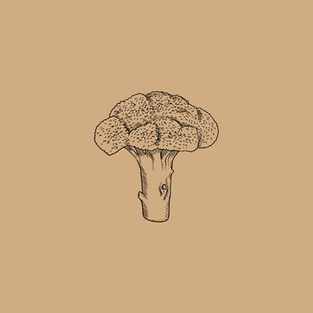Vitamin K
- Anni Weeks, NDTR

- Aug 25, 2020
- 5 min read

What is vitamin K?
This vitamin is a little more elusive than the others-- most people know vaguely what each vitamin does, but many are clueless when it comes to K. To make matters worse, vitamin K has graced news headlines lately as the hot topic for those against vaccination as well as a potential coronavirus treatment. So what is true and what is not? No need to worry, this article and the related links will provide you with everything you need to know, as well as do some much needed myth busting (Click here for an article on Common Myths about Vitamin K!

Vitamin K is a fat-soluble vitamin (click here learn more about the difference between fat and water soluble vitamins). Like other fat-soluble vitamins, it should be ingested with fat-containing foods (such as the ones listed in this health fat foods reference) for optimal digestion. Since leafy greens are a top source, it’s easy to pair a vitamin K inclusive salad with healthy fats like avocados and vegetable oil-based dressings.
A Vitamin with Multiple Names
Much like the vitamins we have discussed before, K has other names that describe where it comes from and what form it takes. It can be important to recognize these names in the case that you are deciding what supplement would be appropriate for you.

The bacteria in our intestine produce a small amount of vitamin K, however it is not enough on its own to satisfy the body’s requirement. Scientists are discovering that the amount produced by the body varies from person to person, even more emphasizing the importance of diet in getting adequate amounts.
What does the body use Vitamin K for?

This vitamin is vital to blood clotting -- so much so that it is administered usually within an hour of birth to prevent infant loss. Beyond blood clotting, this nutrient is involved in bone metabolism and protecting bone health. It also plays a role in strengthening vessels. It has even caught the attention of dermatologists recently as they suspect it can play a role in preventing dark circles under the eyes and varicose veins when appropriate intake is maintained.
Although this nutrient has been around for a while, and its discovery won the researchers a Nobel Prize in medicine, there is much we don’t know about vitamin K. Especially being featured in the news more prominently lately, scientists are eager to learn more about this vitamin and its potential properties, particularly those involved in preventing disease or healing from disorders.
Dietary Reference Intakes (DRIs)
The DRIs for vitamin K are based on Adequate Intake (AI). When assessing intake with your healthcare team, it is important to be mindful of all the sources you are taking, including supplements.
Helpful terms to know
AI: recommended daily intake of a nutrient; established by the Institutes of Medicine (IOM) to meet or to exceed the needed amount to maintain adequate nutrition for most people in a particular stage of life or gender group; established when not enough evidence is available to determine the Recommended Daily Amount (RDA)

Deficiency
A lack of vitamin K is rare in adults, however it can occur. Infants, however, are susceptible to low vitamin K due to the lack of sufficient levels transferred from the mother to the baby across the placenta. Even in healthy newborns and those who reach the proper estimated gestational age, vitamin K levels fall below the detection limit. This is discussed further in Common Myths about Vitamin K.
The following groups/disorders can increase the risk of developing a deficiency:
Newborns, infants, premature birth, exclusively breastfed (monitored during the first few days of life)
Absorption disorders
Older age
Pancreatic, intestinal, and gastrointestinal (GI) disease
Chronic antibiotic users or those administered antibiotic therapy over an extended period of time
Symptoms of Deficiency
General
Hemorrhage, which is excessive bleeding (predominant sign) -- can lead to fatal anemia
Bleeding
Bruising
Inadequate bone metabolism/mineralization
Pain
Prolonged blood clotting
Infants
Pale skin or lips
Irritability
Seizures
Excessive sleeping
Jaundice (yellowing of eyes after the first ~3 weeks of life)
Bloody, black, or sticky stool
Vomiting blood or excessive vomiting
Toxicity
There is not a documented toxicity level (Upper Limit or UL) for vitamin K, however it is toxic in large amounts.
Symptoms of Toxicity
General
Note: These symptoms are based on rare cases of anaphylaxis, shock, and immune/allergy response prompted by incorrect doses of vitamin K or administration of synthetic forms. Dietary intake is the preferred route of ingestion, and reporting any supplement consumption to your doctor is always encouraged.
Flushing
Dizziness
Sweat
Rash
Decreased blood pressure
Increased clotting factors

Infants
Hemolytic anemia
Hyperbilirubinemia (build up of bilirubin in the blood)
How to determine levels of vitamin K
Due to vitamin K’s crucial role in clotting and coagulation, nutrient levels of vitamin K are detected through tests that measure the time it takes for our body to clot. In very simple terms, the longer it takes for our body to clot healthily, the more likely we are to experience bleeding problems.
The following chart from VeryWell Health does an excellent job of explaining the different values measured when assessing vitamin K and coagulation, and why each is important (board-certified physicians review their articles so that they are evidence-based and accurate):

Normal ranges (not on blood thinners):
PT: 10-12 seconds
PTT: 30-45 seconds
INR: 1-2
Other possible indicators of vitamin K status include tests for liver damage and calcium. If you have concerns, consult your physician and dietitian for more information on how these values can connect to vitamin K.
Sources of Vitamin K
Vitamin K is found in plants products, especially leafy green vegetables, and legumes. While it is also produced by bacteria in the intestine, our gut is incapable of producing the necessary amounts on its own. It’s a good idea to eat well and take a probiotic to ensure gut health.

Plant foods are the top source of vitamin K, with vegetable oils being the next most plentiful resource. Some of the highest sources of vitamin K are also some of the most excellent sources of plant based protein as well (see the vegetables and legumes listed in the chart below, courtesy of No Meat Athlete).

How stable is Vitamin K?
Vitamin K in fats & oils is destroyed by being exposed to fluorescent light and sunlight (ultraviolet rays). It is resistant to heat, oxygen, and moisture.
Supplementation & Treatment with Vitamin K
Uses
Vitamin K is used in the treatment of hypoprothrombinemia (low prothrombin levels) as well as to increase blood clotting.
Available Forms
Vitamin K in supplement form is generally available as phylloquinone, MK-4, or MK-7. Common examples include Mephyton and Konakion.

Potential Drug-Nutrient Interactions
Those taking anticoagulants (such as Warfarin) need to monitor their vitamin K intake and ensure that it is consistent. Drugs like Warfarin work against vitamin K and can decrease clotting time if vitamin K intake is not kept at a consistent level day to day.
Fat-malabsorptive disorders
For those with disorders affecting fat-absorption, and thereby fat-soluble vitamin absorption, water-soluble forms of vitamin K are manufactured. Talk to your dietitian about these alternative options if this applies to you.
FREE Patient Resources
Related Professional Resources
Don't you wish you had a quick reference to brush up on vitamin K before seeing your clients or patients? This quick reference will help you organize your thoughts and prove to be a great resource in between appointments.
Related Items in the Shop
Related Posts
References
Mahan KL, Raymond JL. Krause's Food & the Nutrition Care Process 13th Edition. 2011. Saunders. ISBN: 978-1437722338.
Hart J. Eat Pretty. Chronicle Books. 2014. ISBN 978-1452123660.
Gropper SS, Smith JL, Carr TP. Advanced Nutrition and Human Metabolism, Seventh Edition. Cengage Learning. 2017. ISBN: 978-1305627857. \
Food and Nutrition Board, Institute of Medicine, National Academies. Dietary Reference Intakes (DRIs): Recommended Dietary Allowances and Adequate Intakes, Vitamins. Accessed at https://www.ncbi.nlm.nih.gov/books/NBK56068/table/summarytables.t2/?report=objectonly.
Araki S, Shirahata A. Vitamin K Deficiency Bleeding in Infancy. Nutrients. 2020;12(3):780. Published 2020 Mar 16. doi:10.3390/nu12030780
Ten Cate H. Thrombosis management in times of COVID-19 epidemy; a Dutch perspective. Thromb J. 2020 Apr 20;18:7. doi: 10.1186/s12959-020-00220-3. PMID: 32336956; PMCID: PMC7169369.
Pronsky ZM, Elbe D, Ayoob K. Food Medication Interactions (The Foremost Drug-Nutrient Interaction Resource. 18th Edition. 2015. ISBN: 978-0-9710896-6-2
Freston K, Friedrich B. Clean Protein (The Revolution that will Reshape Your Body, Boost Your Energy--and Save our Planet). Hachette Books. 2018. ISBN: 978-1-60286-332-3.










































Comments